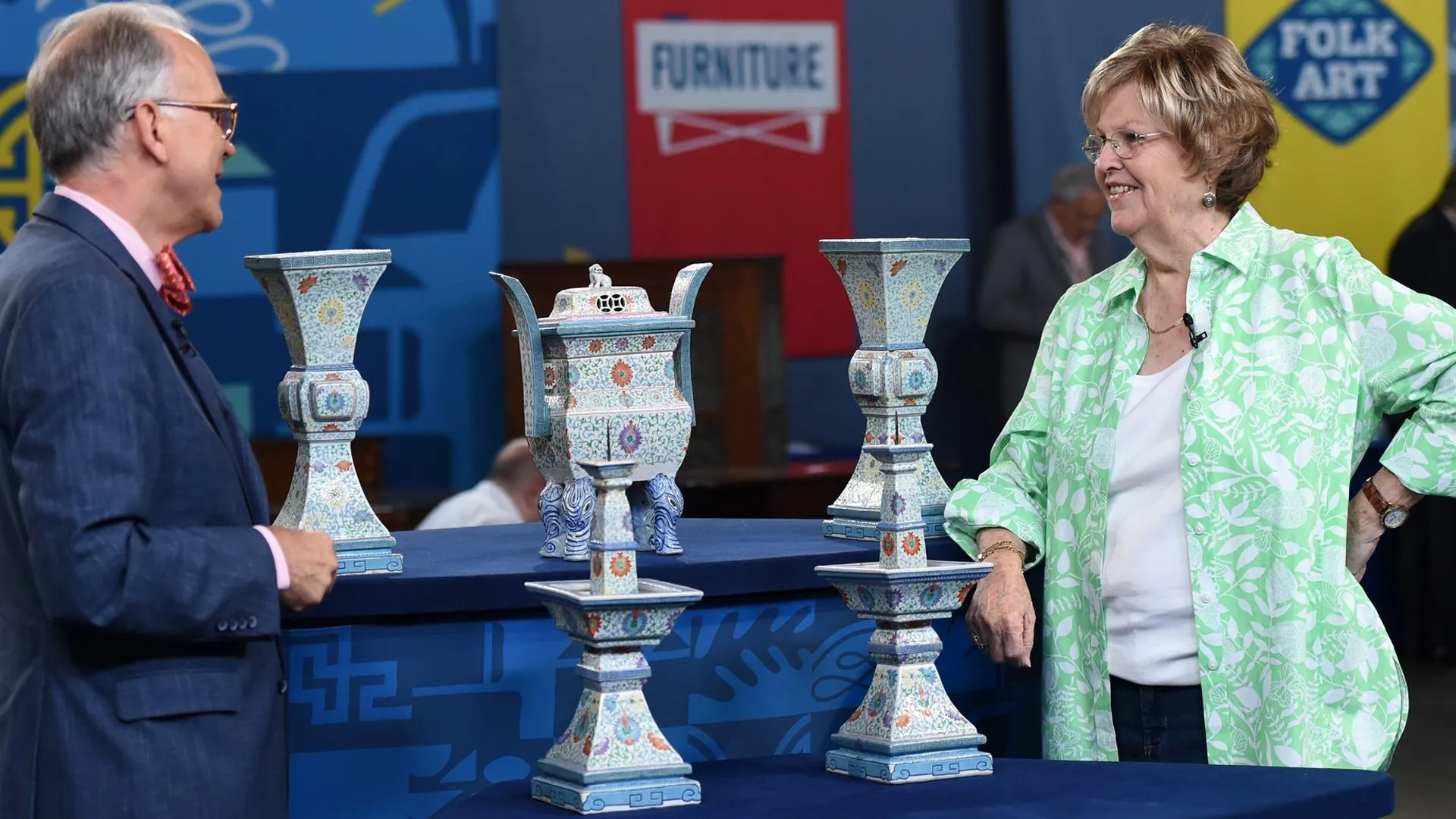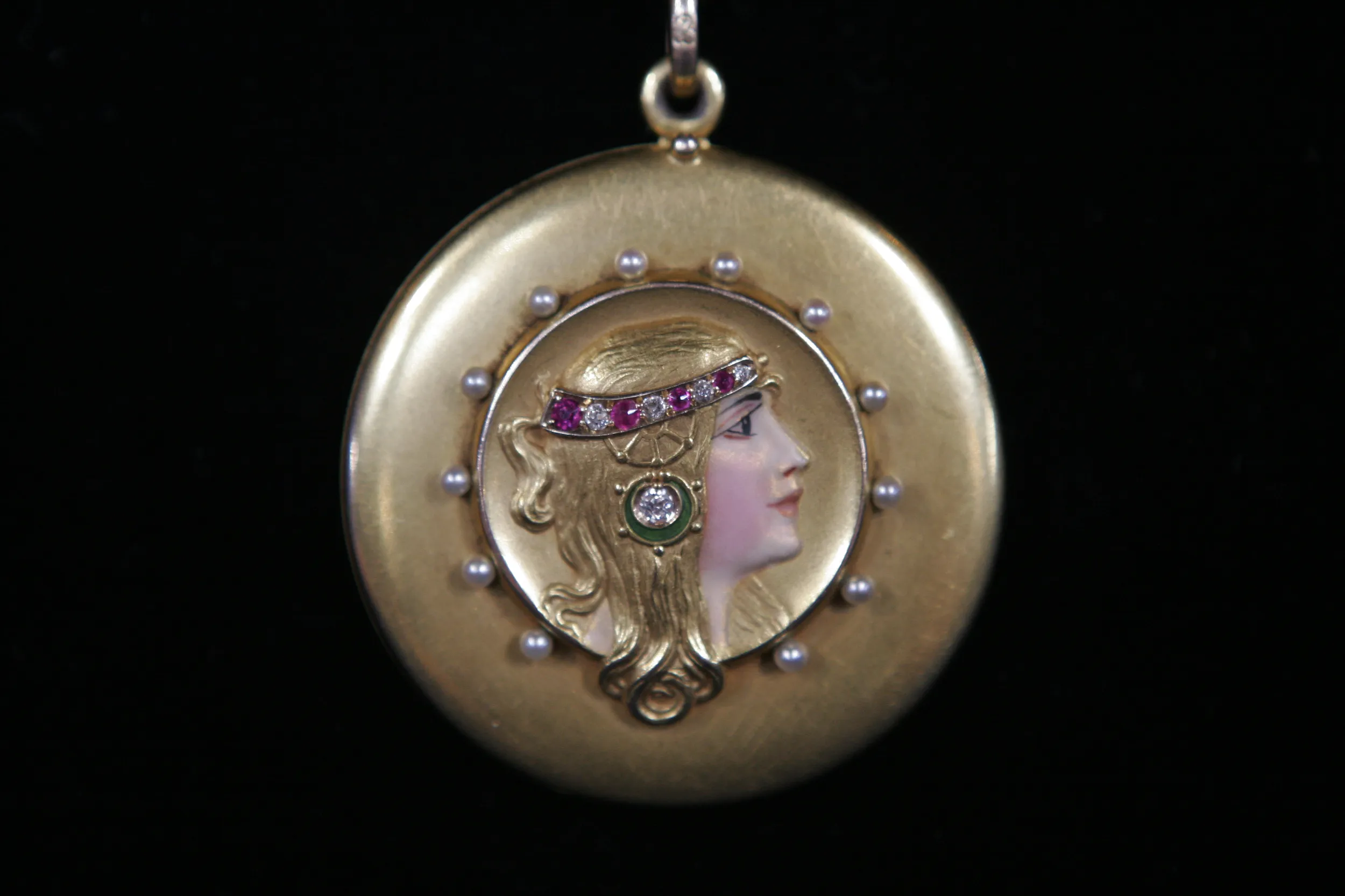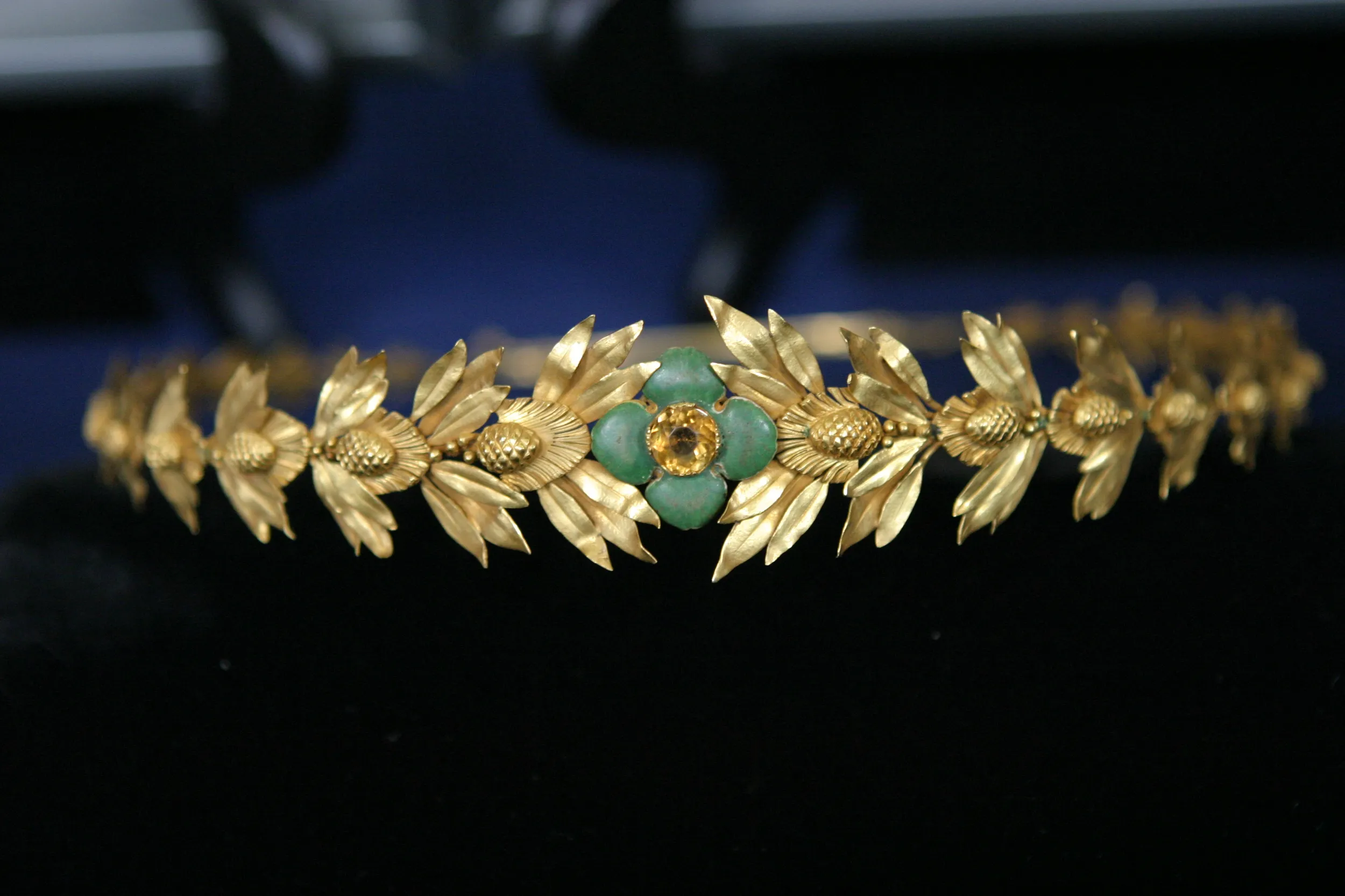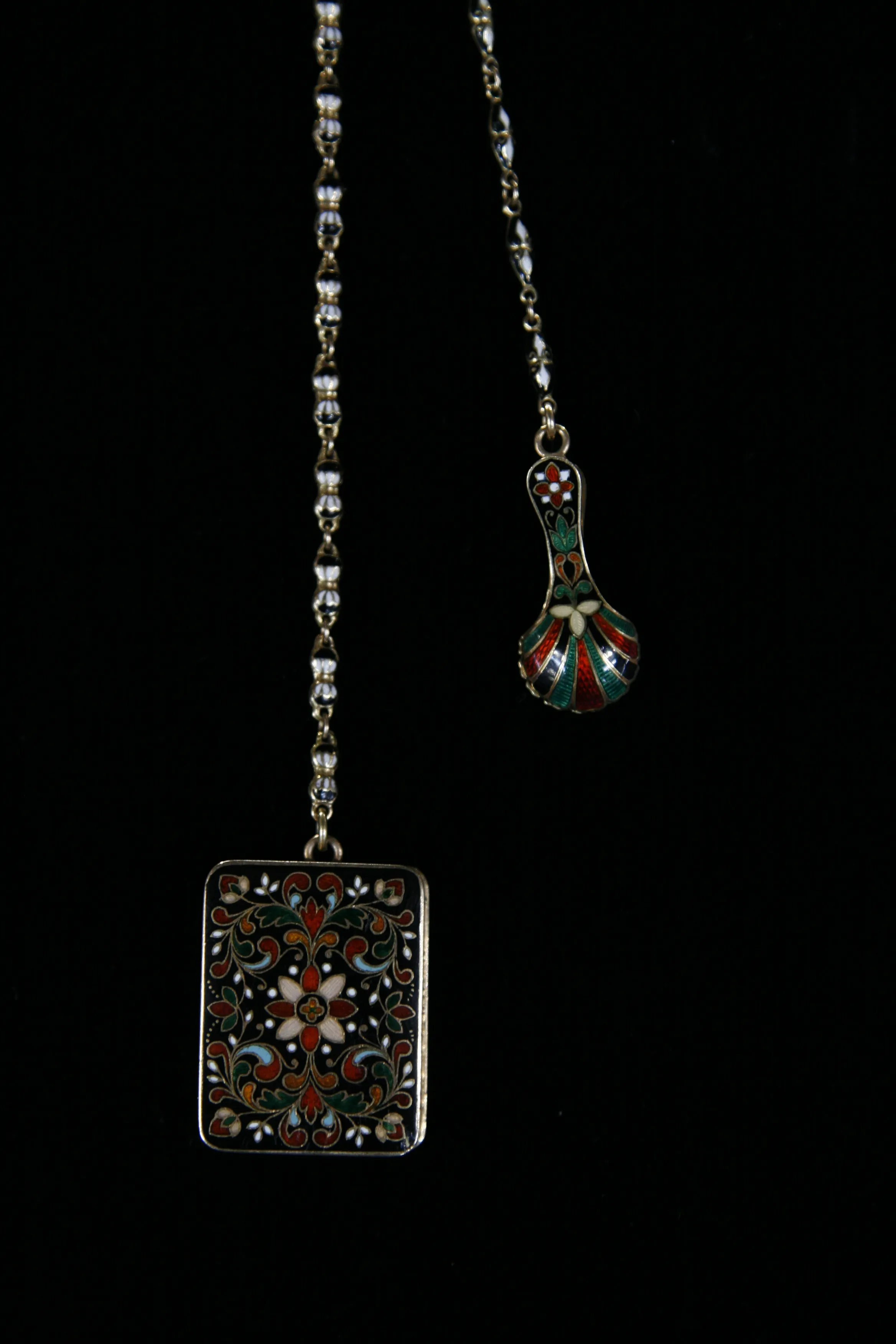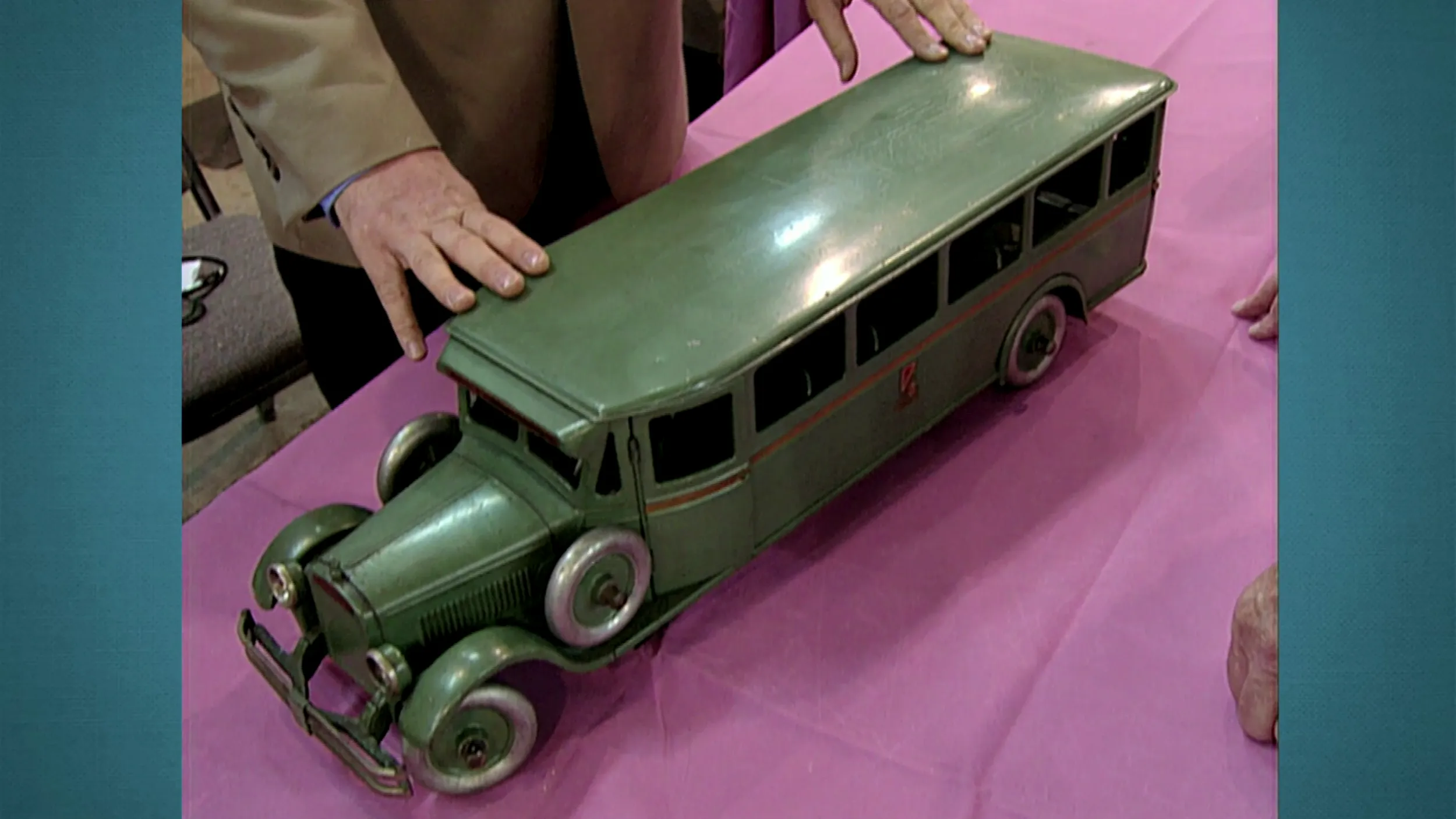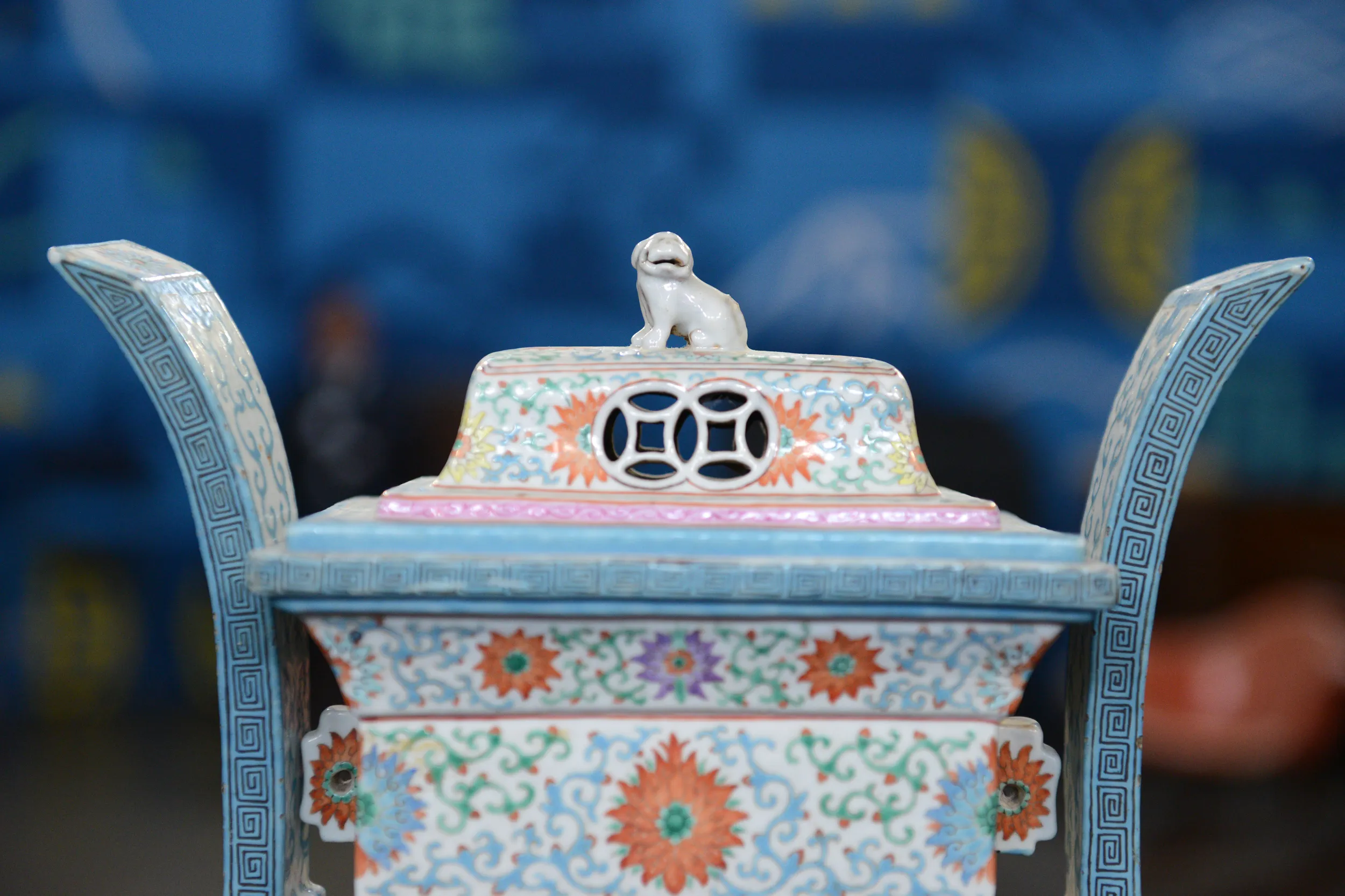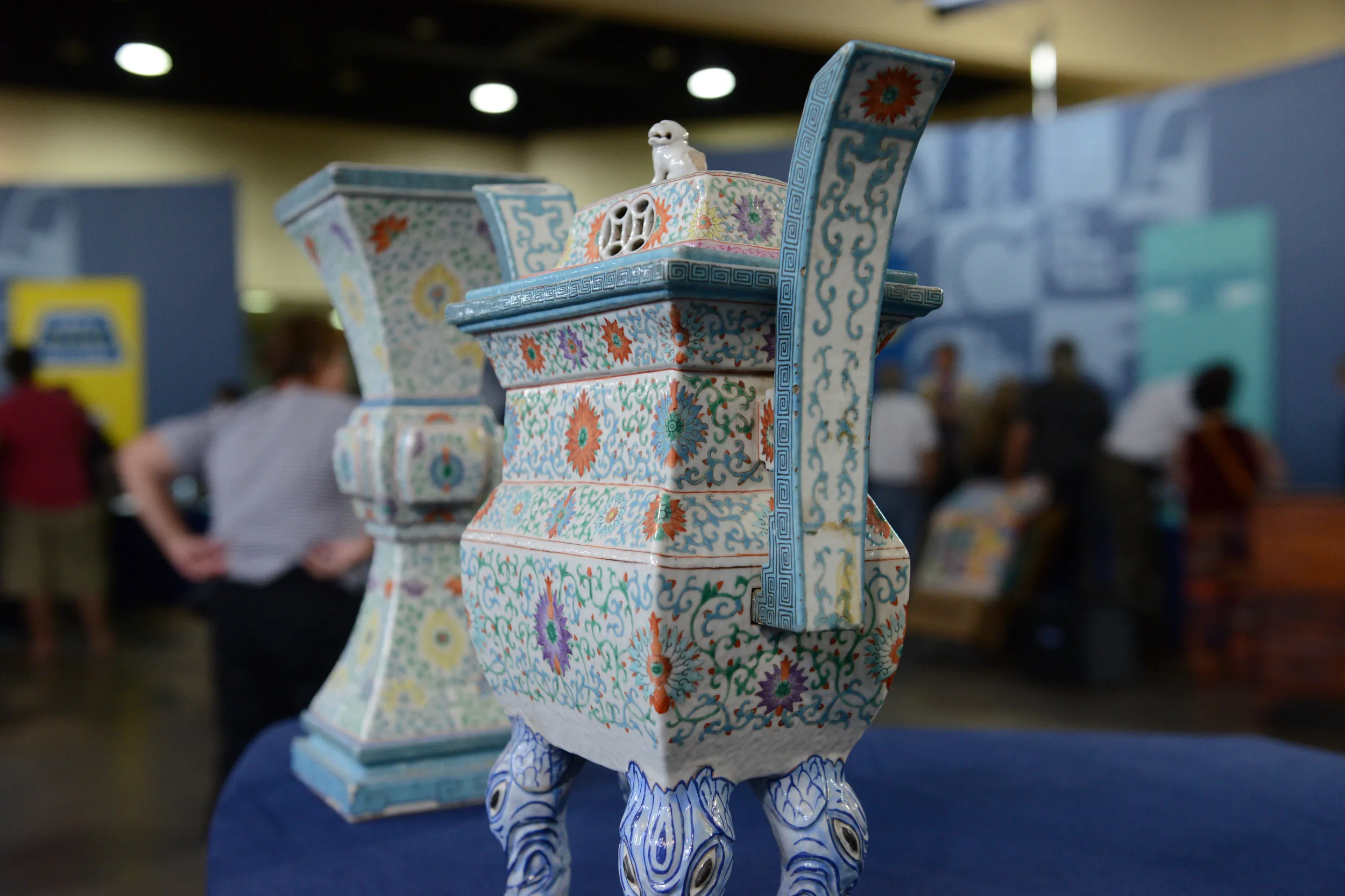GUEST: My parents lived in Tokyo prior to World War II. And in about '31 or '32, they used to go to Yokohama for summer vacation, because it was so hot in Tokyo. They came back by train, and the train would stop at several places. And at one of them, there was a monk selling this set. So they took all the money they had left from their vacation, and I mean they pooled it in order to buy these. And I can't tell you how much.
APPRAISER: I think when we were talking, you thought they were Japanese 17th century or something, was what...
GUEST: Yeah. I think they're Japanese.
APPRAISER: This is called a garniture.
GUEST: Okay.
APPRAISER: And more properly it's an altar garniture, common both in China and Japan. This is called a gu. In Chinese terms, this is called a gu, and it's based on ancient Chinese bronze forms. And you get this shape in China and Japan, as you do this center shape, which is a censer, an incense burner.
GUEST: Right.
APPRAISER: So that's also a shape you get similar examples in China and Japan. And the same thing with these candle holders, these cricket candle holders. But what makes this more Chinese than Japanese...
GUEST: Really?
APPRAISER: ...is the decoration.
GUEST: Oh, my gosh. (softly)
APPRAISER: And it's the combination of the decoration with the shape that really tells us that these are Chinese. The decoration is this kind of continuous pattern of lotus blossoms amid scrollwork.
GUEST: Yeah.
APPRAISER: And the decoration is enamel, which is essentially kind of a glass that's baked onto the porcelain body. Now, this is porcelain, which is a high-fired type of ware.
GUEST: Right.
APPRAISER: That's the very finest kind of ware. The majority of it comes from one place in China called Jingdezhen. We know that these are not from the 17th century, because the combination of these colors were not used until the 19th century.
GUEST: Really?
APPRAISER: So that narrows the date down. So we're looking at something that was made, in all likelihood, the mid-19th century, made in China, for a major temple. And these were all lined up, all five in a row. And you'll notice here in the center, the censer at the top has a little small dog.
GUEST: Yes.
APPRAISER: That's actually a Buddhist lion.
GUEST: Oh, it certainly is.
APPRAISER: And a Buddhist lion is there as a protective figure. And you notice what it's above-- an aperture where the smoke would rise from for the incense. But it's a double cash symbol-- coins.
GUEST: Oh, my.
APPRAISER: With the inference of wealth, prosperity. What's also terrific about these is, look at the legs.
GUEST: I know.
APPRAISER: They're stylized elephants. There are chips, and there are some cracks.
GUEST: Right..
APPRAISER: And I know the other candlestick has had a broken section, and it's been repaired. Right. And some of these legs have been repaired. So that's going to affect the value a little bit. It's worth about $15,000 to $25,000 at auction.
GUEST: Are you kidding? Whoa. Wow. (laughing) Oh, I'm not supposed to say "wow." My parents would be amazed.

